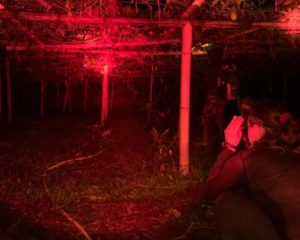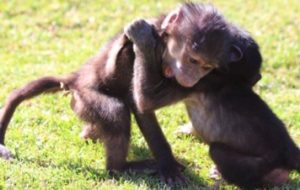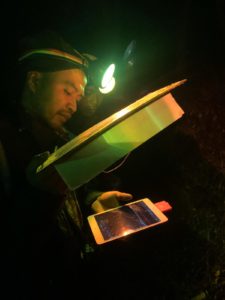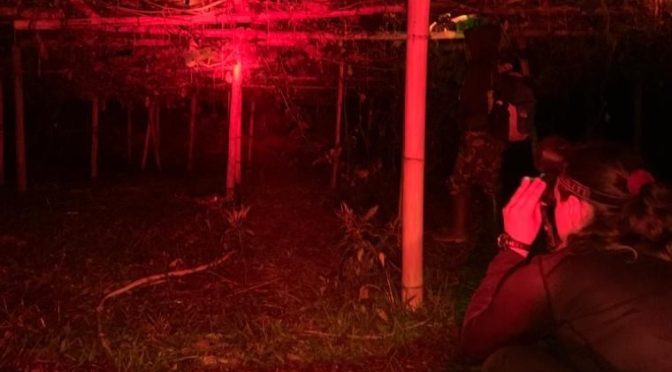I have always been interested in the behaviour and social relationships of animals, though no group of animals have captivated me as much as primates. My focus for the past four years has been on the development of immature primates, specifically play behaviour (and let’s face it, young animals are absolutely adorable when they play!).

All mammals, and surprisingly many non-mammalian species, engage in play. This suggests that it is essential for growing individuals and it is thought to aid in their physical and social development. There have been many proposed ideas as to the functions of play- such as allowing youngsters to learn about their social environment and test out the abilities of others, allowing individuals to practice adult behaviours, and allowing individuals to learn how to cope with unexpected or stressful events (such as falling or being attacked). To investigate this further, I conducted a desk-based study for my Masters dissertation where I looked at LFP’s long-term data set to determine patterns in play in slow lorises. Studying play in slow lorises will allow us to gain a more universal view of play as well as its evolutionary significance.This work drove me to want to come to LFP and observe the lorises in person so I could watch them engage in play and see first-hand the movements that they use.

I arrived at LFP in the beginning of November and immediately started going to the field. After following young lorises for about two weeks I finally saw play! While playing, lorises mainly hang upside-down and wrestle with each other and of course, as expected, it is absolutely adorable! In fact, it looks very similar to what they look like while fighting- maybe they are practicing the fighting skills they will use as adults! While here, I will try to video record the lorises playing so I can later analyse the exact movements they use while playing. This will be done to try to determine the exact function of play in this species.
As if play isn’t interesting enough, lorises also use sonic as well as ultrasonic vocalisations to communicate. In addition to studying play, I am recording ultrasonic vocalisations along with the behaviours to determine the function of such calls. Because play very often resembles aggression, individuals need to communicate a non-aggressive intent to their play partner; therefore, I hope to determine if lorises have a “play” vocalisation. So far, I have recorded a lot of ultrasonic communication and am looking forward to analysing all of the data!

My time so far at LFP has been absolutely amazing and I truly love being here! Seeing the lorises in their wild habitat is truly breathtaking and I cannot wait to share the results from this study with everyone.

